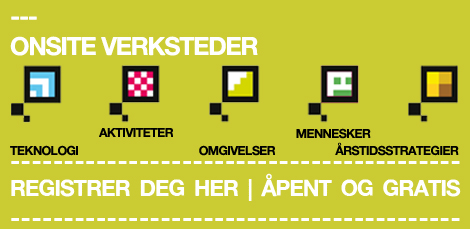The planning and architectural firm Ecosistema Urbano (Spain) heads the project dreamhamar, a collective dream to redesigne the city center of Hamar, Norway. A total of 10 workshops are held in the Bazaar Building next to Stortorget Square in Hamar during this autumn, and is the main tool for dreamhamar.
The on-site workshops allow participants to meet, interact, brainstorm and discuss their ideas and thoughts conserning the Square and the city. The aim is to use creative methods to make the participants familiar with each other, so they would like to develop new and fresh ideas. The workshops have limited number of places depending on the person directing the workshop, a creative guest or a community activator.
The workshops are open and free, and are aimed at the inhabitants in Hamar and Hedmark county.
The workshops have 5 different topics:
TECHNOLOGY | 26th Sept – 2th October
ACTIVITIES | 10th – 16th October
ENVIRONMENT | 24th – 30th October
PEOPLE | 7th – 13th November
SESONAL STRATEGIES | 21th -27th November
To participate in the workshop, you must register with name, phone number and email address. The workshops last for two nights, and make sure you can attend both if you sign up.
What is the lecture?
The lecture is open for everyone with no place limitation. The idea is to both communicate the topic to everyone and some fresh results from the workshops (they take place after 2 workshops). It is also an opportunity to create an open debate.
What is a Community activator?
Community activators are creative and dynamic LOCAL people working with the local lab team (ecosistema urbano) and leading the ongoing participation process development. They have experience in working with participation and workshops.
What is a Kreative guest?
A creative guest is an expert coming from outside of Norway to hold a workshop and lecture on the topic of his work / research.
TECHNOLOGY
Internet has become the most interactive public space. We believe in the possibilities of
technology as a tool to enhance and promote social relationships and its capacity to increase
the qualities and multiply the intensity and diversity of the physical space. Hamar can
incorporate technology as a way to define a new concept of public space.
ACTIVITIES
Keeping a public square active and diverse is keeping a city alive. Stortorget should be
designed to allow different kind of activities of different nature to take place. A place flexible enough to hold leisure events, cultural and commercial activities and social interaction, from an organized cultural event to a more spontaneous activity. A square conceived as a blank pagewhere citizens can become proactive becoming a key part of the city’s identity.
ENVIRONMENT
Designing a public space today means taking into account, not only the present, but also its
future maintenance, consumption and durability. The solution provided should be thought as to be sustainable in time incorporating the present efficient solutions and allowing flexibility to adapt to better ones in the future. The future Stortorget must be an statement about environmental responsibility raising awareness among its users. Stortorget should become an example to follow, not only in Norway but beyond.
PEOPLE
A public space is the most democratic space in a city allowing anyone to be part of it. Stortorget, as Hamar’s main square should be an inclusive space, being accessible for everyone and appealing for all the different age groups. An inclusive space that enables communication between different people with different ages and backgrounds; a welcoming space to everyone.
SESONAL STRATEGIES
Hamar has extremely different climatic conditions between summer and winter.
A public space should therefore respond to these different temperature and lighting
circumstances providing the optimal conditions at the different seasons. From the concept and design we want to explore the possibilities of color, materials, temperature, climatic comfort, lighting conditions, etc. How can we design a responsive environment that creates different atmospheres at the different times of the year?



